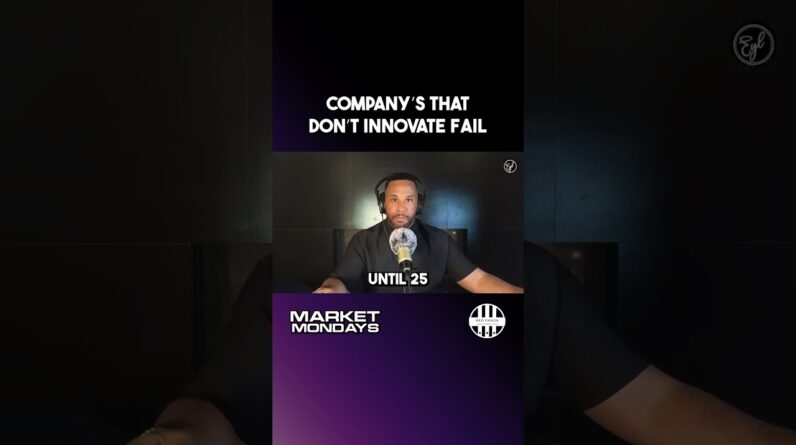The Dual Nature of Tesla: A Blend of Technology and Energy, Yet Concerns Arise over Elon Musk’s Lack of Focus Elon Musk’s brainchild, Tesla, embodies a unique combination of ground-breaking technology and sustainable energy solutions. With its electric vehicles and renewable energy initiatives, Tesla has revolutionized the automotive industry and has become an icon of innovation. However, amidst Tesla’s achievements, concerns loom over its enigmatic CEO’s lack of focus. Exploring the juxtaposition of Tesla’s remarkable advancements and Elon Musk’s uncertain trajectory, this blog post uncovers the dual nature of the company, shedding light on the challenges it faces in maintaining its technological prowess while addressing its leader’s potential distractions.
The Dual Nature of Tesla: A Blend of Technology and Energy, Yet Concerns Arise over Elon Musk’s Lack of Focus
Introduction
In the world of technology and innovation, one company has managed to capture the attention of investors and enthusiasts alike – Tesla. With its groundbreaking advancements in electric vehicles and renewable energy, Tesla has become a favorite pick for many stock clubs and investors looking for the next big thing. However, beneath the surface of its impressive achievements lies a concern over Elon Musk’s lack of focus, which raises questions about the company’s long-term success. In this review, we will explore the dual nature of Tesla, highlighting its innovative endeavors while also examining the potential risks associated with its enigmatic leader.
Tesla: A Leader in the Technological Revolution
Tesla’s rise to prominence can be attributed to its ability to seamlessly combine technology and energy in its innovations. The company’s groundbreaking electric vehicles have revolutionized the auto industry, paving the way for a future powered by clean energy. With sleek designs, exceptional performance, and a robust charging infrastructure, Tesla has managed to garner a loyal customer base who appreciate the company’s commitment to sustainability.
Furthermore, Tesla’s foray into energy storage solutions has solidified its position as a leader in the renewable energy sector. Through its Powerwall and Powerpack products, the company has successfully harnessed the potential of battery technology, enabling individuals and businesses to store and utilize energy efficiently. This integration of technology and energy has not only benefitted customers but has also paved the way for a greener future.
Weaknesses Lurking in the Shadows
Despite Tesla’s remarkable achievements, concerns have arisen regarding Elon Musk’s lack of focus. The enigmatic and multi-faceted CEO’s extracurricular activities, including ventures like SpaceX and The Boring Company, have led some to question whether he can effectively manage the day-to-day operations of Tesla. While Elon Musk’s vision and entrepreneurial spirit are admirable, it is essential for a company to have a leader who can dedicate their full attention and expertise to ensure continued success.
In addition to leadership concerns, Tesla’s recent acquisition of Twitter for a staggering $44 billion has raised eyebrows and ignited a spirited debate among industry experts. Some argue that this move demonstrates Tesla’s commitment to expanding its presence in the digital sphere, while others see it as a potentially overpriced gamble that could divert valuable resources away from the company’s core focus – electric vehicles and renewable energy solutions.
Examining Financial Metrics and Comparison
To gain a comprehensive understanding of Tesla’s position in the market, it is crucial to examine its financial metrics. With a profit margin of 15%, a gross margin of 25.6%, and a return on equity of 21%, Tesla’s numbers may appear impressive at first glance. However, compared to industry heavyweight Nvidia, Tesla’s margins seem less robust. Nvidia’s profit margin stands at an impressive 29.4%, while its gross margin surpasses Tesla’s at 64.1%. Although Tesla carries significant brand equity, its margins cannot compete with Nvidia’s unparalleled financial success.
The Nvidia Factor
While our main focus is on Tesla, it is essential to mention Nvidia, a company that serves as a benchmark for Tesla’s margins. Nvidia’s position in the market showcases the success that can be achieved when focusing on a specific niche. Specializing in graphics processing units (GPUs), Nvidia has carved out a dominant position in the gaming and artificial intelligence sectors. Tesla could potentially learn from Nvidia’s strategic approach in order to further bolster its profitability and gain a competitive edge in the market.
Conclusion
In conclusion, Tesla’s blend of technology and energy has made it a captivating company, capturing the imagination of investors and enthusiasts around the globe. However, concerns over Elon Musk’s focus and the potential risks associated with his extracurricular activities loom in the background. While Tesla’s financial metrics are notable, they fall short compared to formidable competitors like Nvidia. As Tesla continues to navigate the technological revolution, it will be crucial for the company to strike a balance between innovative endeavors and a laser-like focus on its core mission.
FAQs
-
What makes Tesla a favorite company among stock clubs?
Tesla’s groundbreaking advancements in electric vehicles and renewable energy, combined with its sleek designs and robust charging infrastructure, have made it a top pick among stock clubs. -
What are the weaknesses of Tesla?
Elon Musk’s lack of focus and his involvement in extracurricular activities outside of Tesla raise concerns about the company’s long-term success. Furthermore, Tesla’s recent acquisition of Twitter for $44 billion has sparked debate regarding its potential impact on the company’s core operations. -
What are Tesla’s financial metrics compared to Nvidia?
Tesla boasts a profit margin of 15%, a gross margin of 25.6%, and a return on equity of 21%. However, compared to Nvidia, Tesla’s margins are relatively lower, with Nvidia’s profit margin standing at 29.4% and a gross margin exceeding 64.1%. -
What can Tesla learn from Nvidia?
Nvidia’s specialization in graphics processing units (GPUs) has allowed it to dominate the gaming and artificial intelligence sectors. Tesla could benefit from adopting a similar strategic focus, potentially improving its profitability and competitive positioning. -
What should Tesla prioritize for long-term success?
Tesla should prioritize maintaining a laser-like focus on its core mission of electric vehicles and renewable energy solutions, while ensuring that its leadership remains dedicated solely to the company’s operations.










